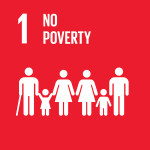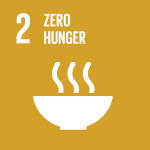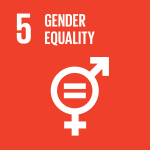– Rasheed Sulaiman V
Centre for Research on Innovation and Science Policy (CRISP), India
22 January 2020
The food security of more than half the world’s population depends on rice production. Most rice production environments are increasingly affected by climate change. Farmers need access to seeds of rice varieties that can tolerate increasing incidents of droughts, floods and salinity. While diverse pathways are needed to address this challenge, most science, technology and innovation (STI) policies frame this as a breeding challenge. It is high time that we prioritise other potential pathways such as in-situ conservation of indigenous rice varieties that can effectively withstand these stresses.
Rice is the most widely consumed staple food for a large part of the world’s human population, especially in Asia. In India, rice is grown in almost half the states. Rice farming in India is characterized by increasing incidence of abiotic stresses, such as droughts, floods and salinity, making the enterprise risky and thereby adversely affecting the livelihoods of poor, smallholder farming households.
Farmers need access to seeds of rice varieties that can tolerate droughts, floods and salinity. Though Indian farmers grew more than 100,000 varieties of rice till the 1970’s, many of these traditional landraces disappeared from cultivation when the Indian Government promoted high-yielding modern varieties[i]. Only around 6,000 such indigenous varieties are currently available, mostly grown by poor farmers in tribal regions of India.
Since the 1960s and 70s, when the one-size-fits-all Green Revolution paradigm was promoted, many scholars and farmers have made the case for in-situ conservation of indigenous landraces (local varieties which has developed largely adapting to the natural and cultural environment in which it lives) and promoted their cultivation. Unfortunately, such alternative pathways were neglected in the GR era.
During the Green Revolution, varieties selected and bred for high yields and responsive to external inputs (irrigation and fertilisers), promoted by the International Rice Research Institute (IRRI) and rice research centres under the Indian Council of Agricultural Research (ICAR) and the State Agricultural Universities (SAUs) became the dominant pathway of promoting agricultural technologies. This pathway attracted state funding (including donor support) and state patronage.
The ‘success’ of this Green Revolution approach (though achieved at enormous environmental cost[ii]), is measured in terms of significant increase in production and productivity of rice (also in wheat). This framing is further reinforced as most new challenges in agriculture are presented as the lack of relevant varieties that need to be bred by formal science, technology and innovation (STI) actors.
In recent years, a number of stress tolerant rice varieties (STRVs) have been developed and promoted. Breeding research for STRVs at the global level is being funded by donors, mainly Bill and Melinda Gates Foundation (BMGF), through IRRI during the period 2007-2019. The nine multiple STRVs include five from India (DRR 52, DRR 47, Sukha dhan 5, CR dhan 801, and CR dhan 802), one from Bangladesh (BRRI dhan78), and three from Nepal (Sukha dhan 6, Bahuguni dhan-1, and Bahuguni dhan-2) which are also released and disseminated in South Asia[iii].
Consistent with the Green Revolution model, many of these varieties are being promoted with subsidies from various government agencies in different parts of the country. While both men and women farmers have expressed preference for STRVs and see these as a major risk management strategy to reduce crop losses[iv], ongoing research has indicated the non‐availability of seed as a major constraint for continued use of these varieties by these vulnerable smallholder farmers[v].
Recent years have witnessed the promotion of community based women-led seed production systems to promote these varieties. Efforts are in place to develop technical (seed production related) and entrepreneurial (seed business related) capacities of women self help groups to engage in seed production and marketing. Promoting women‐led seed systems has the potential to address the challenges of both: making good quality seed available to farmers, and also expanding the role women play in rice value chains. The engagement of women as entrepreneurs driving the development of such systems can help bridge the gender gap with regard to access to good quality seed. These initiatives to generate and promote STRVs through women led seed systems are potentially contributing to the following United Nation’s 2015-30 Sustainable Development Goals (SDGs), namely:
- SDG 2-enhancing investments in Agricultural Research and Extension (attracting more funding for seed research and extension to achieve zero hunger)
- SDG 5 -enhancing capacities of women farmers (strengthening technical and entrepreneurial skills of women groups)
- SDG 1-contributing to poverty reduction (enhancing rice production among poor households), and
- SDG 13-strengthening resilience and adaptive capacity to climate-related hazards and natural disasters (enhanced availability of STRVs helping farmers to better adapt to climate stress).




In contrast to the above Green Revolution-style pathway, it is important to highlight that there are alternative approaches trying to address the issue of access to STRVs. Though they are less dominant in the formal STI discourse, there are many Civil Society Organisations (CSOs), especially in Odisha, and other parts of India that are trying to identify ‘indigenous’ (heirloom) varieties, conserving them in situ (on farms) and making them available to all interested farmers.
Most of these ‘traditional’ or ‘indigenous’ landraces have adjusted over long periods to regional ecosystems including environmental and climatic variations (from undulating lands to increasingly unpredictable weather). Many of these varieties are hardier to problems such as pests and drought and have other desirable characteristics such as taste and nutrition[vi] [vii]
Thanks to the efforts of the CSOs, many farmers now grow heirloom varieties and circulate their seeds to help safeguard these varieties from extinction. In the process, they reduce their dependency on external agencies for seeds and agro-chemicals and subsidies from the government.
While organisations such as the state seed testing laboratory, the Central Rice Research Institute (CRRI), the National Bureau of Plant Genetic Resources (NBPGR) and Protection of Plant Varieties and Farmers’ Rights Authority (PPV & FRA) are also conserving indigenous varieties ex situ in gene banks, their central objective is to produce new varieties that have stress tolerance and high yields through screening, selection and breeding for specific characteristics.
Critically, ex-situ conservation limits access to these institutional collections by farmers. In contrast, in-situ conservation efforts of CSOs offer the advantage of crop-adaptation by farmers, giving them more control over their genetic resources. However, such CSO- and farmer-led efforts have so far received less policy attention.
The questions here are:
- To achieve the SDGs, is it effective to invest almost all state resources to only one STI pathway – breeding new STRVs and disseminating seeds of these varieties?
- Why are other alternative pathways such as in-situ conservation and cultivation not getting the desired funding support and state/donor patronage in the current rapidly changing climate scenario?
- Are alternative pathways of agricultural development the responsibility of Civil Society Organisations alone?
I would argue that the pluralism of development pathways, while undoing the dominance of modernising development, is crucial for meeting the SDGs[viii]. And, therefore, most importantly in this context, it is crucial to ask why access to seeds of climate resilient rice varieties is still framed as a breeding challenge and not as farmer-driven grassroots innovation in situ conservation challenge?
In this STRINGS project, we are trying to explore how different types of Science, Technology and Innovation (STI) emerge from different actors and how their interaction and varied STI inputs contribute to SDGs. We are also trying to understand which STIs are prioritised (by directing resources) and which pathways are perceived as dominant by different stakeholders and why. In particular, we are keen to generate policy relevant recommendations on how to achieve better alignment between the different pathways through strategic investments, inclusive governance and priority setting.
Footnotes
[i] Deb D (2019) The Struggle to Save Heirloom Rice in India, Scientific American, Volume 321, Issue 4
https://www.scientificamerican.com/article/the-struggle-to-save-heirloom-rice-in-india/
[ii] Glaeser B (1987) The Green Revolution Revisited: Critique and Alternatives, Routledge, London https://www.taylorfrancis.com/books/e/9780203840443
[iii] https://strasa.irri.org/home
[iv] Anchal Arora, Sangeeta Bansal and Patrick S Ward (2017) Do farmers value rice varieties tolerant to droughts and floods? Evidence from a discrete choice experiment in Odisha, India, Water Resources and Economics, 1-15
[v] Puskur R and Mathide Thonon (2018) Understanding gendered modalities for sustainable adoption of stress-tolerant rice varieties in Odisha
[vi] Deb D (2009) Valuing Folk Crop Varieties for Agroecology and Food Security, Independent Science News https://www.independentsciencenews.org/un-sustainable-farming/valuing-folk-crop-varieties/
[vii] Shylaraj, K S, Soumya G. Nadh and Shimi K. Chandran (2018) Comparative analysis of grain quality and nutraceutical properties of selected rice varieties from Kerala Current Science VOL. 114, NO. 5, 10 MARCH 2018 https://www.currentscience.ac.in/Volumes/114/05/1088.pdf
[viii] Arora,S, M Vijayabaskar, Divya Sharma and Andy Stirling (2019) Sustainable Development through Diversifying Pathways in India, Economic and Political Weekly, Vol LIV No46, 32-37

Leave A Comment